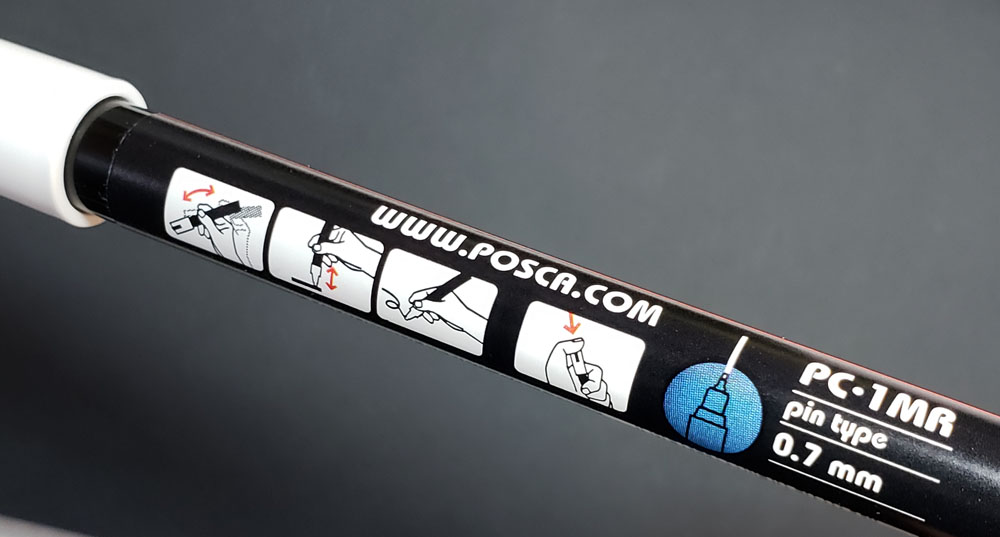I was lucky enough to get a packet of pens to review from our friend and enabler The Poor Penman at the San Francisco Pen Show. Not only is he a pen enthusiast but also an employee at Pentel America.
So, since this is Inktober month I decided this was a good time to try out the new Pentel Pointliner and compare them to some of the more familiar felt tip or fineliner pens currently available.

The Pentel Pointliner come in a set of five pens ranging in tip size: 0.05, 0.1, 0.3, 0.5, and 0.8mm. At the moment, it doesn’t look like the pens are available in open stock but the set is listed on Blick in the US for $10.50 for the set making each pen $2.10. For comparison, the Sakura Micron from Blick are $1.99 each and $2.50 each from JetPens.
With fineliners, I tend to use mostly the 0.1, 0.3 and 0.5 so those are usually the ones I need to replace first so I do hope open stock options become available.

The Pointliner pens are black barrels with black pigment ink. The tips are protected by metal encasings. They are water resistant and fade resistant. The pens do not indicate if they are specifically archival but fade- and water-proof is pretty close.

I wanted to compare the Pointliners to most common fineliner brands like the Copic Multiliner SP, Sakura Pigma Micron, Faber-Castell PITT, ZIG Millennium and Sharpie pen to see how it compared. Since the Pointliner is sold in a multi-pack and was promoted to be sold in craft stores, I included the ZIG Millennium which is also sold in a lot of the larger craft store chains. I also included my favorite drawing “fineliner”: the Platinum Carbon Desk Pen with Platinum Carbon Black ink.

All of the other fineliner pens also feature black ink that is water resistant/waterproof and metal encased tips. From left to right: Faber-Castell PITT, Pentel Pointliner, Sakura Pigma Micron, Copic Mutliliner SP, ZIG Millennium, and Sharpie pen. The institutional beige is the Sakura Pigma Micron. It’s the biggest deterrent for this Micron for me. Ugh, it’s ugly. Like technical pencils, I’m okay with fineliners have a “standard” look: black, grey or silver with a metal tube casing for tip and snap cap. Totally fine. Beige is not good.
The Sharpie pen is available everywhere from drugstores to art stores but is really only available in one tip size. It does come in an array of colors now but what I am comparing in the black drawing pen. The density of black on the Sharpie pen is not as rich as the Pentel Pointliners and some of the other brands.

Surprisingly, the Faber-Castell PITT drawing pens were the least black of all the pens I compared after the Sharpie pen. I only had two ZIG Millennium pens left in my collection, an 005 and an 01 and both were pretty well-used so it was hard to judge the overall writing quality fairly. Those super-fine tips wear out and bend very easily but the ink was still good and dark despite the damaged tips. The Sakura Pigma Microns are available in the largest variety of tip widths, colors and even bullet shapes and brush tips. However, I find that they wear out very quickly — well before the ink is used up and the tips are not replaceable. The Copic Multiliner SP is expensive but the ink barrel and tips are replaceable. While not the most cost effective, the replaceable parts make it feel like the least impactful on the environment if you don’t factor in a fountain pen like the Platinum Carbon Desk Pen which has a tip equivalent to an 01-03, is super long lasting and totally refillable. Of course, you are limited to one tip size with a fountain pen so there is an advantage to having a couple wider or thinner fineliners in your drawing case for larger areas and detail work.

This is an Inktober drawing I did with my Platinum Carbon Desk pen and watercolor for the color details. The undersketch was done with a Col-erase in vermillion so you can still see hints of the red even though I erased the pencil.

This close-up can show the evenness of the lines.

This drawing of the same Gretsch guitar was done with the Pentel Pointliners and Copic markers. There are a few places where the black lines didn’t dry before I erased or brushed my hands over it so there are some smudges.

From the reverse, you can see the Copic marker bleedthrough but the Pointliners do not bleed through at all.

With the Pointliners, the detail photo shows the line variation I was able to get by using different tip sizes. And also see the smudges! ARGH!
So, my conclusion is that the Pointliners are as good as Sakura Pigma Microns and not as aesthetically ugly. Microns institutional beige barrels are awful. If Pointliners become available as open stock, that would be a great advantage allowing users to select tip sizes to meet their needs and replace pens as needed. And finally, more pen makers need to take into consideration the ability to replace tips and refill pens where appropriate. I can’t be the only person who is starting to feel guilty about how many plastic pen barrels I’ve thrown in the trash over the years?
Tools:
DISCLAIMER: The items included in this review were provided free of charge by Pentel of America for the purpose of review. Please see the About page for more details.















































 DISCLAIMER: Some of the items included in this review were provided to us free of charge for the purpose of review. Please see the
DISCLAIMER: Some of the items included in this review were provided to us free of charge for the purpose of review. Please see the